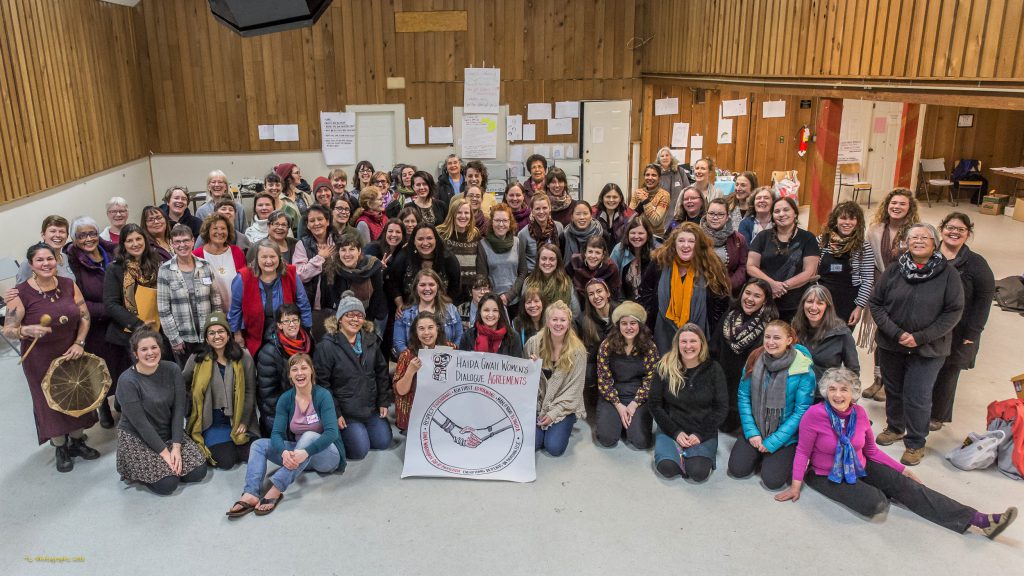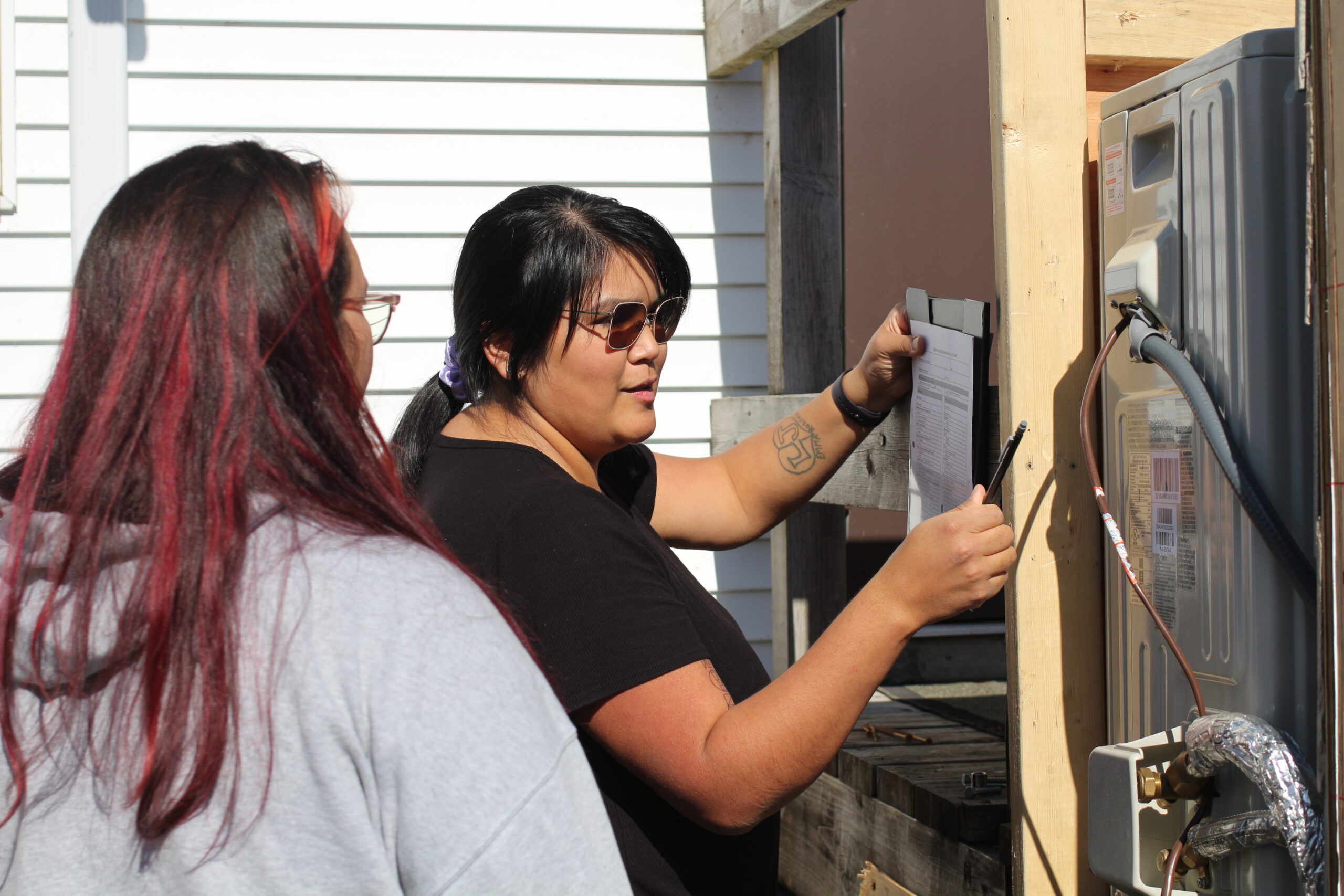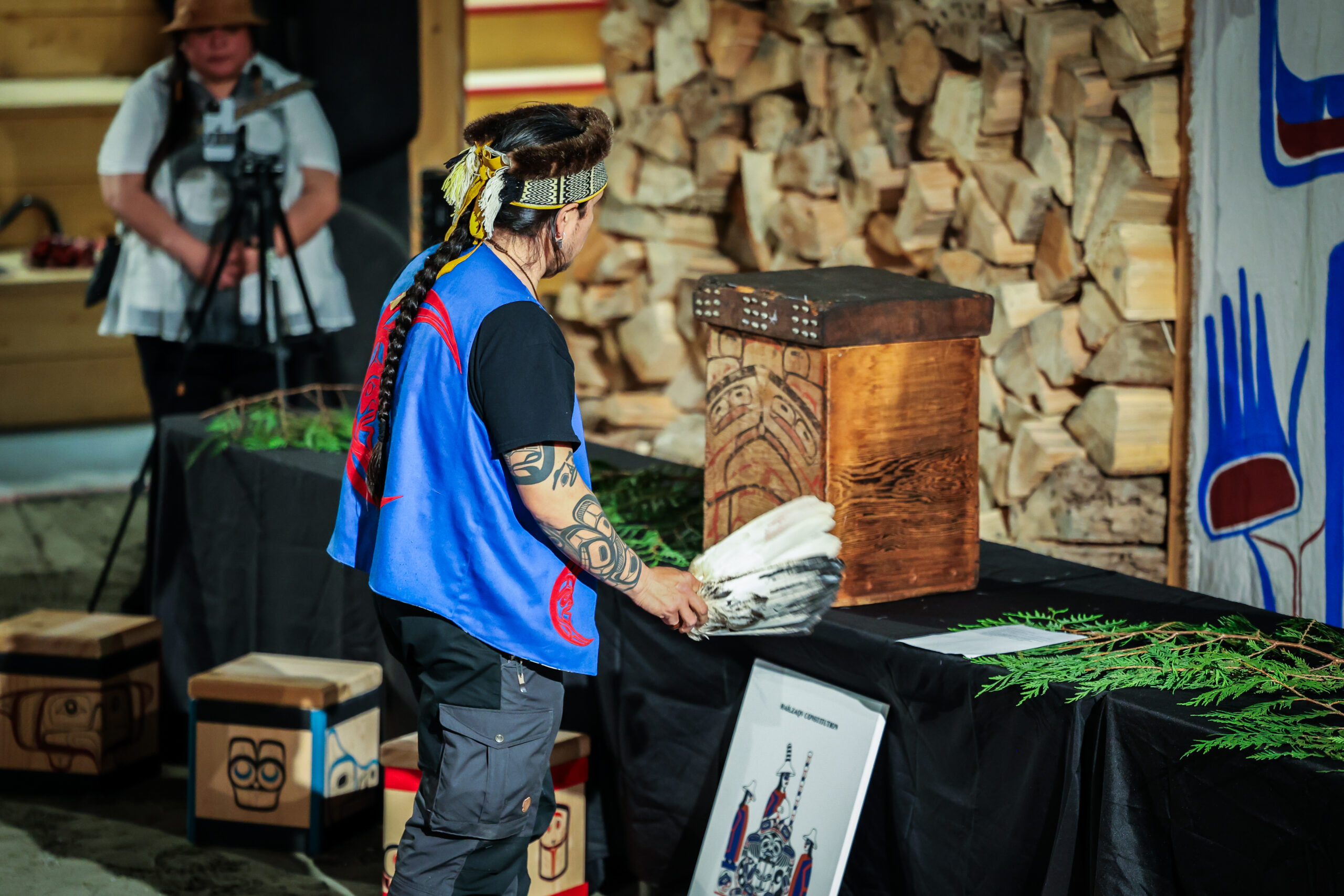If you ask Pauline Waterfall about Heiltsuk women from generations ago, she’ll tell you they were just as they are today—self-reliant, hardworking and resourceful.
“We need to go back and honour who we are,” says the Heiltsuk knowledge-keeper and educator, who is also a former councillor for the Heiltsuk Tribal Band Council. When Waterfall’s daughters were growing up, she knew she had to prepare them for their rites of passage, but the right way to do things wasn’t always accessible or clear. Community members spoke to Elders, she says, because they realized each person carries bits and pieces of knowledge.
“We started piecing it all together,” explains Waterfall. “It was a process of empowering people to claim their cultural knowledge.” She says the men were fishermen and often away for long periods of time, so women kept up governance tasks, and pieced together mortuary customs and practices, rites of passage protocol, and feast and potlatch practices. Due to their experience upholding these responsibilities, half of the tribal council became women. “It was logical and brilliant,” says Waterfall. “Our women were elected in the early 1950s—the first generation of elected officials. Today, the majority of Heiltsuk tribal councillors are women.”
The Heiltsuk Women’s Declaration, composed in 2015, was created through a consensus of Heiltsuk women over a period of meetings, consultations and dialogue. “We are sacred in mind, body, and spirit,” the declaration reads. “We are women of integrity who are strengthened by our Heiltsuk culture. We honour ourselves. We honour one another. This is consistent with the principles of our culture and the foundation of our work as Heiltsuk women and as matriarchs.”
Today, there is a clear global shift in gender roles and responsibilities. As more women are elected chief councillors and working in varying levels of the Canadian government, Waterfall thinks they’re following the example set out by early Heiltsuk women.
As Chief Councillor of the Heiltsuk Nation and President of CFN-GBI, Marilyn Slett said she recognizes women’s leadership on all levels. “We have a strong role for women in our communities,” she says. “We see elsewhere how it’s often hard to get women into leadership roles, but here we elect female leaders because they’ve demonstrated leadership within our families, our communities and our traditional systems.” Women demonstrate leadership in politics by filling seats at tables of decision-makers, she adds, but they’re important at the grassroots level too, providing essential leadership in the way they encounter loss, organize and strengthen the backbone of their societies.
Slett says today’s and tomorrow’s challenges need to be faced with renewed creativity and strength, and the current generation has learned well from their Elders. “Young women are bringing their youthful perspectives, unique experiences and knowledge,” she says. “Women today learn from one another by listening to one another.”
That youthful enthusiasm and competence was on full display at the Heiltsuk and Haida women’s gathering last February. Adeana Young, Vice President for the Council of the Haida Nation and Deputy Chief Councillor for the Old Massett Village Council, says she felt inspired by the many young women who attended the event. Young believes an important part of leadership involves passing the torch from one generation to the next, and having many young women there to witness, listen and speak, offered her hope.
Women in leadership recognize one another, says Young, and they share words of encouragement and support each other. “It’s an unspoken rule,” she says. “We’re always mentoring those coming after us.”


